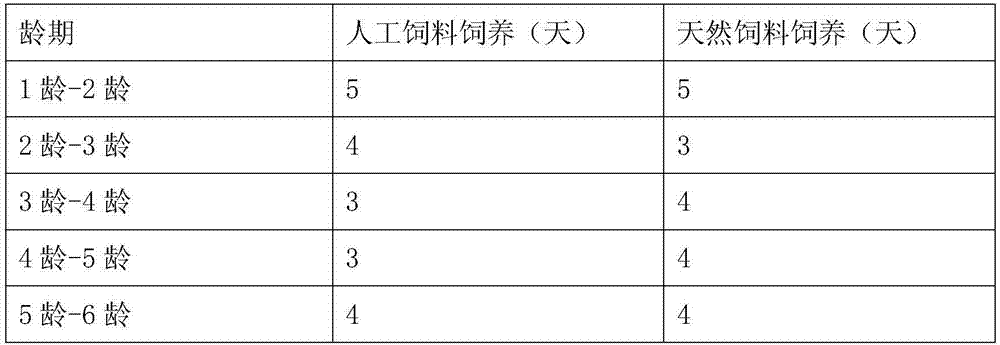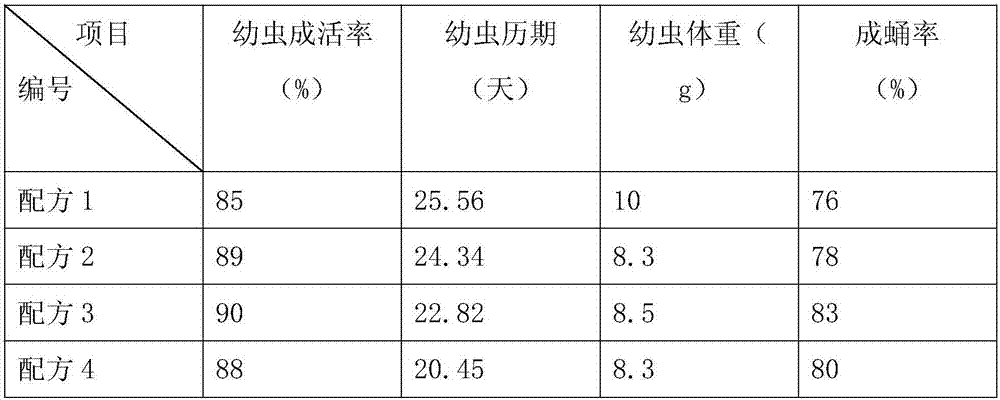Daphnis nerii viral pesticide and preparation method thereof, and artificial feed and application thereof
A technology of oleander hawkmoth and virus insecticide, which is applied in the directions of pesticides, botanical equipment and methods, biocides, etc., and can solve the problem of no oleander hawkmoth virus oleander hawkmoth virus insecticide. To avoid the problems of pesticides, sustainable control of unfavorable pests, damage to ecological balance, etc., to achieve the effect of not easy to drug resistance, conducive to sustainable control and maintenance of ecological balance
- Summary
- Abstract
- Description
- Claims
- Application Information
AI Technical Summary
Problems solved by technology
Method used
Image
Examples
preparation example Construction
[0036] The oleander hawkmoth virus insecticide provided in this embodiment can be prepared by any production method, and this application provides a simple preparation method, which mainly includes the following steps:
[0037] Step 1: Larva rearing, inserting the larvae into a feeding board equipped with oleander hornworm artificial feed, and putting them into a feeding room for feeding; this feeding can be carried out in any environment, and the feeding environment here is as follows:
[0038]Breeding room (temperature control, humidity control, light control) should reach the cleanliness level of 1000, preferably ≧0.5μm dust ≦35 grains / L; ventilation effect, light intensity should reach 3000LX above, and install ultraviolet lamp.
[0039] Step 2: virus infection, re-prepare a feeding plate, raise the oleander hawkmoth larvae to the 4th instar under the environment of step 1, throw the above-mentioned oleander hawkmoth feed into a new feeding plate, and Connect the oleander ...
Embodiment 1
[0054] The insecticide preparation method in the present embodiment is:
[0055] 1. Place 100 oleander hornworm pupae in a container (incubator) at 24°C for eclosion, put the eclosioned adults into the container to mate and lay eggs, and put 2 pairs of adults in each container ; Finally, the larvae are hatched after the above-mentioned eggs are routinely sterilized;
[0056] 2. Put the uniformly heated oleander hornmoth artificial feed into the feeding plate in advance, and insert the 1st instar larvae, and put it into the breeding room for feeding. The feeding temperature is 24 °C; the formula of the artificial feed used is shown in Table 1 Recipe 1 in ;
[0057] 3, the larvae are raised to 4 instars, the oleander hornworm is thrown feed and packed in another feeding plate, and the suspension dimension 2,000,000 PIB / ml virus suspension is inserted on its surface (this virus suspension is the , preferred nucleopolyhedrosis virus, adding an appropriate amount of distilled wat...
Embodiment 2
[0061] The steps of this embodiment are the same as those of Embodiment 1, and the difference is that:
[0062] 1. The number of oleander hawkmoth pupae is 500;
[0063] 2. The formula of the artificial feed used for raising oleander hornworm larvae is formula 2 in Table 1;
[0064] 3. The virus suspension inserted in step 3 is 1 million PIB / ml;
[0065] 4. The weight ratio of the components added in step 5 is different. The weight ratio used in this embodiment is: glycerin 1.5%, nano-scale silicon dioxide 0.2%, refined fluorescent whitening agent 0.8%, aromatic amino acid 0.14%, sodium lignosulfonate 0.3%, polyvinyl alcohol 1%, chlorfluazuron 0.06%, and the balance in sterile water.
PUM
 Login to View More
Login to View More Abstract
Description
Claims
Application Information
 Login to View More
Login to View More - Generate Ideas
- Intellectual Property
- Life Sciences
- Materials
- Tech Scout
- Unparalleled Data Quality
- Higher Quality Content
- 60% Fewer Hallucinations
Browse by: Latest US Patents, China's latest patents, Technical Efficacy Thesaurus, Application Domain, Technology Topic, Popular Technical Reports.
© 2025 PatSnap. All rights reserved.Legal|Privacy policy|Modern Slavery Act Transparency Statement|Sitemap|About US| Contact US: help@patsnap.com



